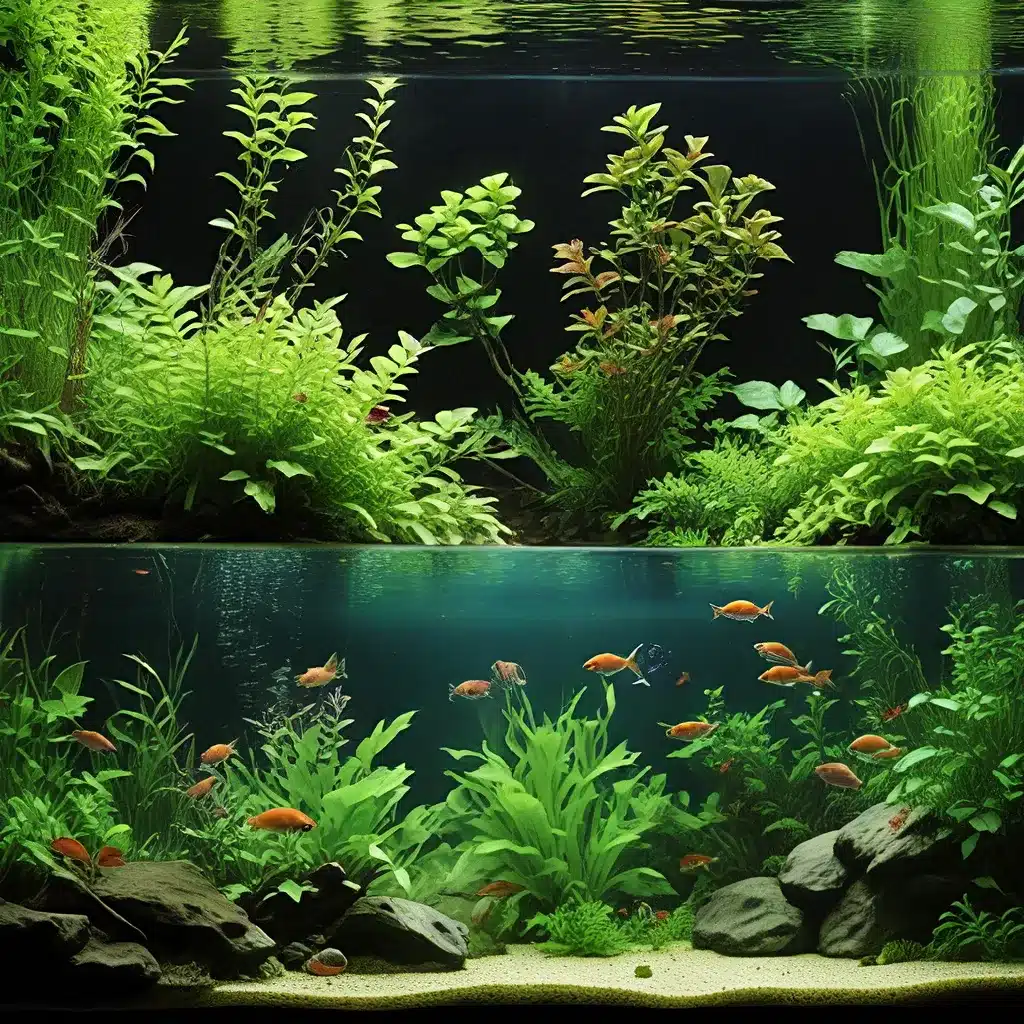
Maintaining Pristine Aquarium Water: The Foundation of a Thriving Ecosystem
Achieving a healthy, thriving aquarium ecosystem is no easy feat, and the foundation for success lies in maintaining impeccable water quality. As the lifeblood of your underwater haven, the water in your aquarium directly influences the well-being of your beloved fish, plants, and invertebrates. In this comprehensive guide, we’ll delve into the intricacies of water management, exploring proven strategies to optimize your aquarium’s chemistry, filtration, and overall maintenance for a visually stunning and biologically balanced environment.
Understanding the Role of Water Quality
At the heart of a successful aquarium lies the delicate balance of its water parameters. From pH and temperature to dissolved oxygen and nutrient levels, each factor plays a crucial role in supporting the diverse inhabitants of your underwater world. Neglecting these elements can lead to a cascade of problems, from algae blooms to fish health issues and even system crashes.
One of the primary challenges aquarists face is managing the buildup of nitrates and phosphates, which can fuel the growth of unwanted algae. These nutrients act as a fertilizer, fueling the proliferation of various algal species, from the ubiquitous green algae to the more problematic blue-green algae (also known as cyanobacteria). Maintaining a careful balance of these nutrients, along with diligent water changes and the incorporation of fast-growing aquatic plants, is essential for keeping algae at bay.
Proper lighting is another crucial factor in maintaining water quality. Aquatic plants thrive in well-lit environments, actively competing with algae for available nutrients and producing vital oxygen through photosynthesis. Striking the right balance between light intensity and duration can help tip the scales in favor of a healthy, vibrant plant community, which in turn supports the overall ecosystem.
Mastering Aquarium Filtration
Effective filtration is the backbone of a well-functioning aquarium, responsible for removing waste, debris, and harmful compounds from the water. Choosing the right filtration system for your setup can be a daunting task, with a wide array of options available, including mechanical, biological, and chemical filtration.
Mechanical filtration focuses on physically trapping solid waste and debris, while biological filtration harnesses the power of beneficial bacteria to break down nitrogenous compounds like ammonia and nitrites. Chemical filtration, on the other hand, utilizes specialized media to remove dissolved organics, heavy metals, and other harmful substances.
The key to effective filtration is to employ a multistage system that addresses these various needs. By combining mechanical, biological, and chemical filtration, you can create a comprehensive solution that keeps your aquarium water pristine and your inhabitants thriving.
Mastering Aquarium Water Changes
Routine water changes are the cornerstone of maintaining optimal water quality in your aquarium. By regularly replenishing a portion of the water with fresh, dechlorinated water, you can effectively dilute the buildup of nitrates, phosphates, and other waste products, while also replenishing essential minerals and trace elements.
The frequency and volume of water changes can vary depending on the size of your aquarium, the number and type of inhabitants, and the overall water parameters. As a general rule of thumb, a 25% to 50% water change once a week is a good starting point for most freshwater setups. However, it’s essential to monitor your water quality closely and adjust the regimen as needed to maintain ideal conditions.
Incorporating Aquatic Plants for Water Purification
Beyond mechanical and chemical filtration, the incorporation of aquatic plants into your aquarium can serve as a natural and highly effective water purification system. Many plant species, such as Cabomba, Egeria, Ceratopteris, Hygrophila, and Vallisneria, possess allelopathic properties, meaning they release natural compounds that inhibit the growth of algae.
These fast-growing plants not only compete for available nutrients but also produce oxygen through photosynthesis, further enhancing the overall water quality. By strategically placing and maintaining a healthy plant community, you can create a self-sustaining ecosystem that requires less intensive maintenance and reduces your reliance on chemical additives.
Harnessing the Power of Algae-Eating Inhabitants
While algae can be a nuisance in the aquarium, the introduction of algae-eating inhabitants can provide a natural and effective means of controlling its growth. Crossocheilus siamensis (the Siamese algae eater), nerite snails, and Amano shrimp are just a few examples of versatile algae-consuming species that can complement your aquarium’s natural balance.
It’s important to note, however, that these algae-eaters should not be solely relied upon to manage the problem. Addressing the root causes, such as excessive nutrients, inadequate water changes, or poor lighting, is crucial for long-term algae control. Algae-eating inhabitants can serve as a valuable supplement to your overall aquarium maintenance regimen.
Troubleshooting Common Water Quality Issues
Despite your best efforts, aquarium owners may occasionally encounter water quality challenges. Diatom (brown) algae, for instance, can be a common problem in newly established tanks, often indicating fluctuations in water parameters. Green algae, on the other hand, may thrive in brightly lit aquariums, while blue-green algae (cyanobacteria) can signal an imbalance in nutrient levels and water circulation.
When faced with such issues, it’s crucial to identify the underlying causes and address them promptly. This may involve adjusting lighting schedules, increasing water change frequency, optimizing nutrient levels, or even introducing specialized filtration methods, such as UV sterilizers for dealing with green water.
By staying vigilant, adapting your maintenance routines, and leveraging the power of plants and algae-eating inhabitants, you can maintain a healthy, thriving aquarium that showcases the remarkable beauty and diversity of the underwater world. Your efforts will be rewarded with a visually stunning and biologically balanced ecosystem that brings joy and wonder to you and your aquatic companions.
Remember, the key to a successful aquarium lies in King Aquarium’s commitment to water quality. By mastering the art of aquarium maintenance, you’ll unlock the true potential of your underwater oasis, where fish, plants, and invertebrates can thrive in perfect harmony.

